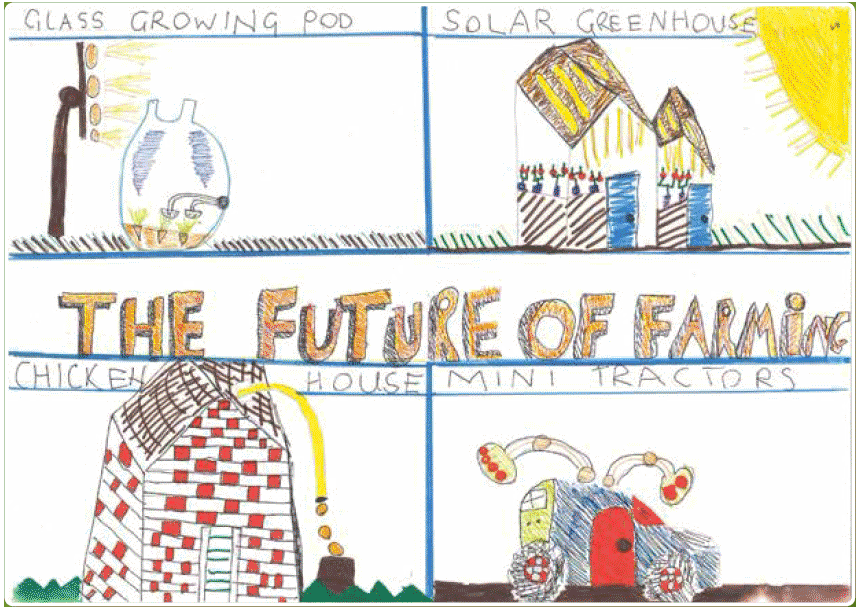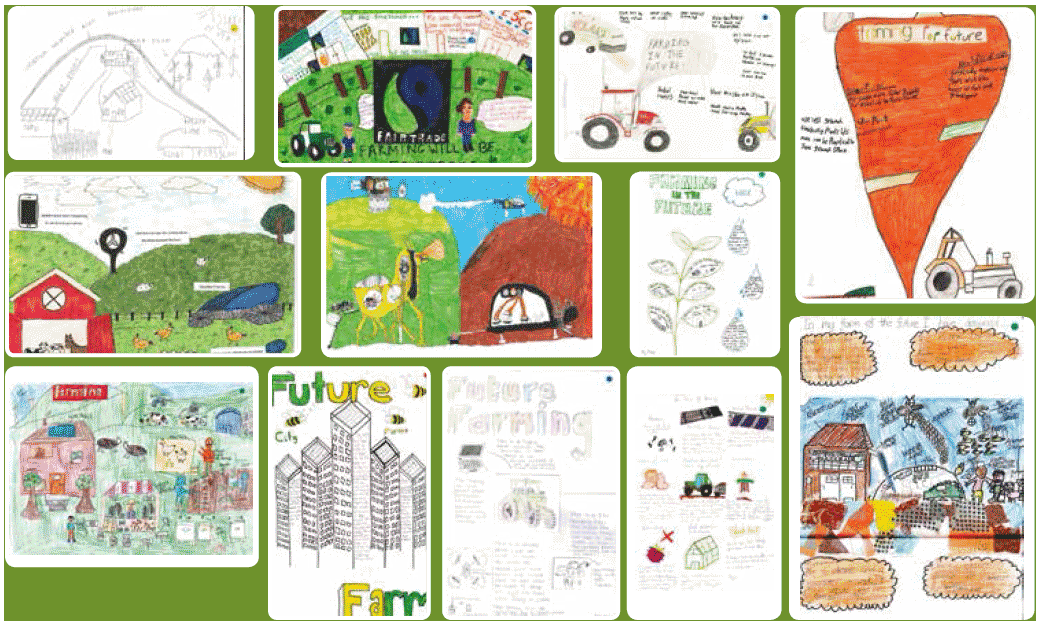The Future of Scottish Agriculture - A Summary of the National Discussion
The Document highlights the themes emerging from responses to the National Discussion on the Future of Scottish Agriculture.
The Future of Scottish Agriculture: A Summary of the National Discussion
Background
At the Royal Highland Show 2015, the Scottish Government launched its National Discussion on the Future of Scottish Agriculture, which set out a vision for Scotland's agriculture industry. That vision was for Scotland to have a green, innovative and profitable agriculture industry which is outward-looking and resilient, supporting our economic growth, environment and communities and contributing to global food security.
Since then many stakeholder workshops and discussions have taken place as part of the National Discussion around the nine outcomes in the discussion document, highlighted below.
Responses
A range of views and submissions have been received by Scottish Government from both stakeholder organisations and individuals, this includes around 50 formal responses as well as views presented at a large number of discussion events held across Scotland. This summary document identifies the common themes emerging from those participating in the National Discussion. These themes will help inform Scotland's future agricultural strategy.
Cover Design - Schools Competition
The front cover was designed by the overall winner of a schools competition to get young people thinking about the future of farming and food production. The competition asked young people to design their vision of a farm of the future. The overall winner of the competition was Blaine Houston of Primary 3b at Cumbernauld Primary School. The back cover includes a collage of winners and runners-up in each of the competition categories.
Front cover art by Blaine Houston, Primary 3b, Cumbernauld, Primary School

Back cover - All winners and runners up in each of the competition categories.

Scotland has an innovative, profitable and sustainable agriculture industry which is outward-looking and resilient, supporting our economic growth, environment and communities and contributing to global food security.
1. Sustainable growth in profits from agriculture
2. Agriculture works as part of our food and drink sector
3. Agricultural supply chain resilient to shocks
4. Training and skills enable farmers to improve their profitability and become greener
5. Farmers boost performance by embracing innovation and best practice
6. Scotland is a world leader in green farming
7. Agriculture recognised as a rewarding career, accessible to new entrants
8. Agriculture valued for its contribution to Scottish society
9. Scotland takes a leading role in agricultural issues on the UK, EU and world stages
SUMMARY OF THEMES FROM RESPONSES TO THE NATIONAL DISCUSSION ON THE FUTURE OF SCOTTISH AGRICULTURE
Scotland's Vision
Scotland has an innovative, profitable and sustainable agriculture industry which is outward-looking and resilient, supporting our economic growth, environment and communities and contributing to global food security.
Public View of Farming/Crofting
- Disconnect between farming/crofting and consumers
- Promote public goods that farmers and crofters deliver
- Consumers need to value food producers
Profitability/Sustainability
- Food and drink sector booming; how can farmers/crofters benefit?
- Price volatility - huge impact but outwith control of farmers and crofters
- Fair price to cover cost of production, farm gate prices too low
- Supermarkets drive down prices to producers
- Input costs too high i.e. fertilisers, feed, etc.
- Use Quality Assurance Schemes to get premium price for quality
- 3 key components: Cost, Market, Support
- Abolish Scottish Agricultural Wages Board ( SAWB) and deliver Living Wage to all
- Subsidies vital but payments going down
- Lack of profit means no money to invest
- Make best use of land and building assets
- Farms/crofts must be run as business with resilience planning to deal with potential risks i.e. financial, disease, etc
- Farming/Crofting sustains fragile communities and prevents land abandonment
- Need land for new entrants, more flexible tenancies and succession arrangements
- Share knowledge and best practice
Research, Education & Training
- Translate research to farmers and crofters
- Early indication of disease
- Alternative crop protection methods
- Plant breeding to increase yields and resilience to issues such as disease, climate change, etc.
- Consider farming systems to meet environmental and food needs
- More tailored advice to drive improvement
- Monitor farms good way to expand knowledge
- Educate consumers on food waste and on benefits of eating local, seasonal and healthier produce
- Agriculture in schools - career opportunities, qualifications etc.
- Make more use of knowledge transfer
- Apprenticeships for new entrants with clear career pathways
- Mentoring schemes, knowledge transfer, to help drive innovation
Co-operatives
- Recognise the role Co-operatives and collaboration can play
- Create better opportunities
- Provide innovation through knowledge transfer and best practice
- Reduce costs and risks
- Greater investment and resource management
Regulations, Legislation & Policy
- Too bureaucratic - some rules not helpful
- Rules gold plated
- Subsidy vital, but payments reducing meaning less to invest
- Retain support for Areas of Natural Constraint ( ANC)
- Reducing subsidies could drive innovation
- Implement Brian Pack "Red Tape" recommendations
- Include agriculture in wider policy Rural, Economic, Health, Food etc.
- Scotland diverse, one size doesn't fit all, needs better targeting
- Joined up policy thinking at Scottish, UK and EU levels
- Greening too restrictive
- Greening doesn't go far enough
- Presumption in favour of development approach with planning
Environment & Green Farming
- Green labelling and marketing of produce
- Recognise role of organics and High Nature Value ( HNV) farming
- Use biomass to reduce carbon footprint
- Use technology to increase efficiency and reduce costs i.e. soil sampling
- Protect biodiversity/habitats with habitat corridors, plant friendly systems etc.
- Recognise role of farming and crofting in land management
- Use knowledge transfer and Scottish Government's "Farming for a Better Climate" initiative
- Minimise waste
- Use renewables to reduce Greenhouse Gas ( GHG) emissions and energy costs
- Consider diversification i.e. wildlife tourism, forestry, etc.
- Need proper discussion on Genetically Modified Organisms ( GMOs), do they affect biodiversity or could they be a solution?
Marketing/Production
- Understand the market and recognise signals
- Identify new routes to market and niche markets
- Concentrate on quality and provenance of Scottish produce
- Promote local, seasonal and healthy produce
- Shorter supply chains, reduce food miles
- Too much power with supermarkets and big business, bias should favour small businesses delivering local produce
- Need to be more efficient and deliver for the market
Delivering the Vision
- Focus on priorities so it is clear what we are trying to achieve
- Priorities should be profitability and environmental sustainability
- Identify and address barriers to change
- Change attitudes and mind-sets
- Develop indicators and goals to measure progress
- Action Plan to address priorities
Contact
There is a problem
Thanks for your feedback